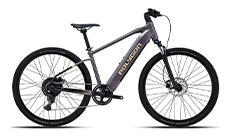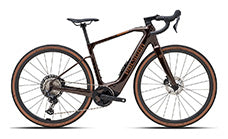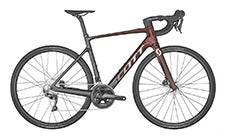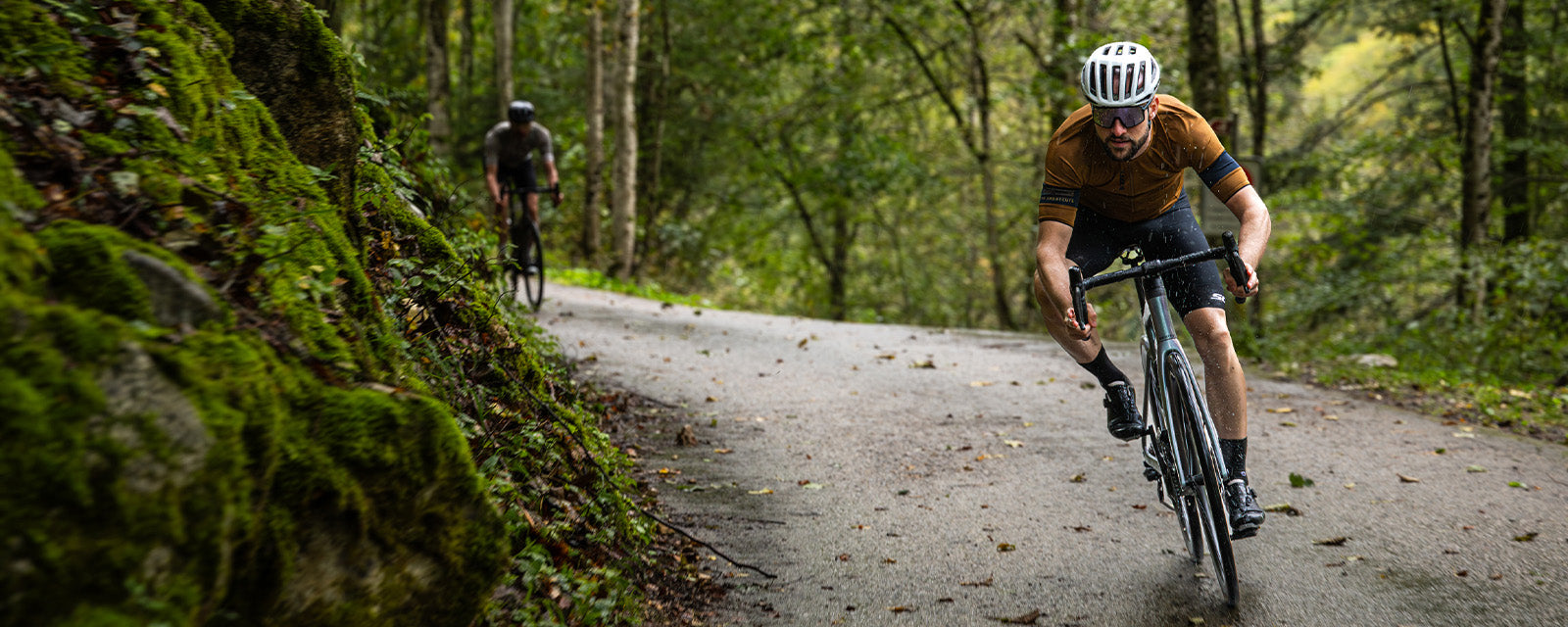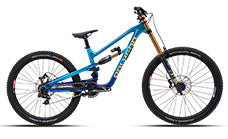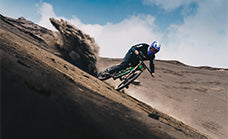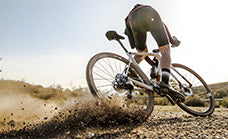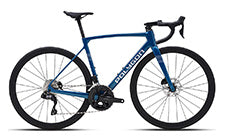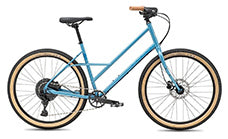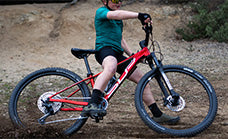Getting Started with Dirt Jumpers: Your Complete Beginner's Guide 2025

Dirt Jumping

Look, dirt jumping is absolutely nuts and that's exactly why people love it. There's something about sending yourself into the air on a bike that just makes sense once you try it. It's like combining skateboarding with mountain biking and adding a healthy dose of "holy crap" to the mix. If you're thinking about getting into dirt jumping, you've come to the right place – I've been at this for years and I'm going to tell you exactly what you need to know to start without breaking your face (or your bike).
Understanding Dirt Jump Bikes
What Makes a Dirt Jumper Different
Here's the deal – dirt jump bikes are built for one thing: getting air and not falling apart when you land. They're like the muscle cars of the bike world, but instead of going fast in a straight line, they're made to fly. You're looking at a single-speed setup (trust me, you don't need gears for jumping), no rear suspension (which might sound crazy but it works), and a frame that can take a beating.
The geometry is all dialed in for sending it – short rear end so you can whip the bike around, steep angles for quick handling, and everything positioned to keep you balanced in the air. I've seen people try to jump on regular mountain bikes and it's just not the same. Get a proper dirt jumper and you'll understand why.
Picking Your First Bike
When I started out, I made the mistake of buying the cheapest thing I could find. Big mistake. You don't need the top-of-the-line model, but get something decent. Here's what actually works:
-
Specialized P-Series: Everyone and their mom rides these for a reason. They just work.
-
Trek Ticket: Solid choice, handles well, won't let you down.
-
Norco Rampage: If you want something that feels like it was built by riders who actually jump.
-
Commencal Absolut: These French guys know what they're doing.
-
Diamondback Grind: If you're on a budget, this gets the job done.
Get Protective Gear
Brain Bucket is Non-Negotiable
I've got no time for people who don't wear helmets. Get a full-face or don't go jumping. Period. Yeah, they're hot and make you look like a stormtrooper, but you know what's not cool? A broken jaw. I started with a half-shell because I thought I looked better – lasted about two weeks before I saw someone eat dirt hard and went straight to the shop for a full-face.
Cover Your Meat
Look, you're going to fall. A lot. I still fall, and I've been doing this forever. Get yourself:
-
Knee pads (the soft ones that actually let you move)
-
Elbow pads (for when you superman into the ground)
-
Impact shorts (because your tailbone will thank you)
-
Gloves with wrist guards (trust me on this one)
The other stuff like back protectors and neck braces? That's for when you're sending bigger stuff. Start with the basics and add as you progress.
Finding Places to Practice
Where to Get Air
Finding good dirt jumps is like finding a good taco truck – once you find it, you never want to leave. Bike parks are obviously the best starting point because everything is built with progression in mind. Public trails can work, but make sure you're allowed to be there. I've seen too many good spots get shut down because people were riding where they shouldn't.
BMX tracks are actually awesome for learning because the jumps are smaller and more forgiving. Plus, BMX kids know how to jump, so watch and learn.
Stay Legal, Stay Cool
Here's something nobody talks about enough – land access. I've had spots get shut down because people didn't respect the property or the rules. If you're riding on private land, get permission. If it's public, know the rules. And for the love of all that's holy, don't be the guy who ruins it for everyone else.
Learning How to Actually Jump
Baby Steps to Big Air
Everyone wants to send it on day one. Don't be that guy. Start by rolling over tiny bumps. Then move to small tabletops where you can just barely get air. Work your way up gradually. I spent my first month just getting comfortable with the feeling of being airborne for half a second. By month three, I was clearing small gaps. By six months, I was actually having fun.
The Basics That Actually Matter
Approaching the Jump: Speed is everything, but too much speed is worse than not enough. Start slow. Way slower than you think you need. The jump is gonna do most of the work, you just need to not screw it up.
The Takeoff: Don't do that weird stiff-arm thing beginners do. Keep your body loose but ready. Think of it like jumping on a trampoline – you compress down, then extend up. The bike follows you, not the other way around.
In the Air: Keep your eyes on where you want to land, not on the ground directly below you. This was huge for me. Also, stop doing that "oh shit" death grip on the bars. Relax. Breathe.
Landing: Both wheels at the same time if you can. Knees and elbows bent to absorb the impact. Roll forward as you land, don't stop dead.
Maintaining Your Weapon
Keep Your Bike Happy
Dirt jumping is hard on bikes. Check everything before you ride:
-
Tire pressure (I run 35-40 PSI)
-
Brakes (especially if you're doing park jumps)
-
Wheels (make sure they're true)
-
Chain (keep it tight but not too tight)
-
Bolts (everything shakes loose eventually)
After riding, give your bike a quick clean and check for damage. A cracked frame is a bad day waiting to happen.
Mistakes I Made So You Don't Have To
Going Too Big Too Soon: I tried to keep up with guys who'd been riding for years. Landed on my head. Don't be me.
Poor Body Position: Leaning back out of fear. Standing too stiff. Not looking at the landing. All recipes for disaster.
Speed Misjudgment: Most crashes come from going too fast, not too slow. You can always add speed later.
Ignoring Fatigue: When you're tired, stupid things happen. Know when to call it a day.
Your Progression Timeline (Reality Check)
Months 1-3: You'll suck. That's fine. Everyone starts here. Learn to pump, manual, and hop. Get comfortable on small stuff.
Months 4-6: You're starting to figure it out. Clearing small gaps, getting air time, maybe trying your first tabletop trick.
Months 7-12: Now you're actually jumping. Bigger features, better style, maybe some rotation tricks if you're feeling spicy.
Building Your Trick Arsenal
Start with the basics:
-
Tabletop (turn the bike sideways)
-
No-hander (exactly what it sounds like)
-
One-footer (keeping one foot on the pedal is key)
The fancy stuff comes later. Focus on style and consistency over trying to be the next YouTube star.
Community Matters
Find people to ride with. Seriously. The dirt jump scene is usually pretty welcoming if you're not an ass. Locals will show you the ropes, point out good spots, and help when you inevitably mess up your bike.
Frequently Asked Questions
Is dirt jumping dangerous?
Hell yeah it is. But so is driving to work. Respect the sport, progress slowly, wear your gear, and you'll probably be fine. I've been doing this for years and my worst injury was a sprained wrist (knock on wood).
Can I use my mountain bike?
You can, but it's like using a butter knife as a screwdriver. It'll work in a pinch, but get a proper tool for the job.
How long until I can do tricks?
If you ride consistently and don't get hurt, you might be hitting basic tricks in 3-6 months. Don't rush it. Style comes with time.
The Real Talk
Here's the truth about getting started with dirt jumping: it's harder than it looks, more addictive than you think, and totally worth the bruises. You're going to fall. You're going to doubt yourself. You're going to watch 14-year-olds do tricks you can't even comprehend yet. That's all part of it.
Start small, progress at your own pace, and remember that every rider who makes it look easy started exactly where you are now – at the bottom of a jump wondering if they're crazy for trying this. The difference between you and them is just time and practice.
Now go find some dirt and send it (responsibly).


